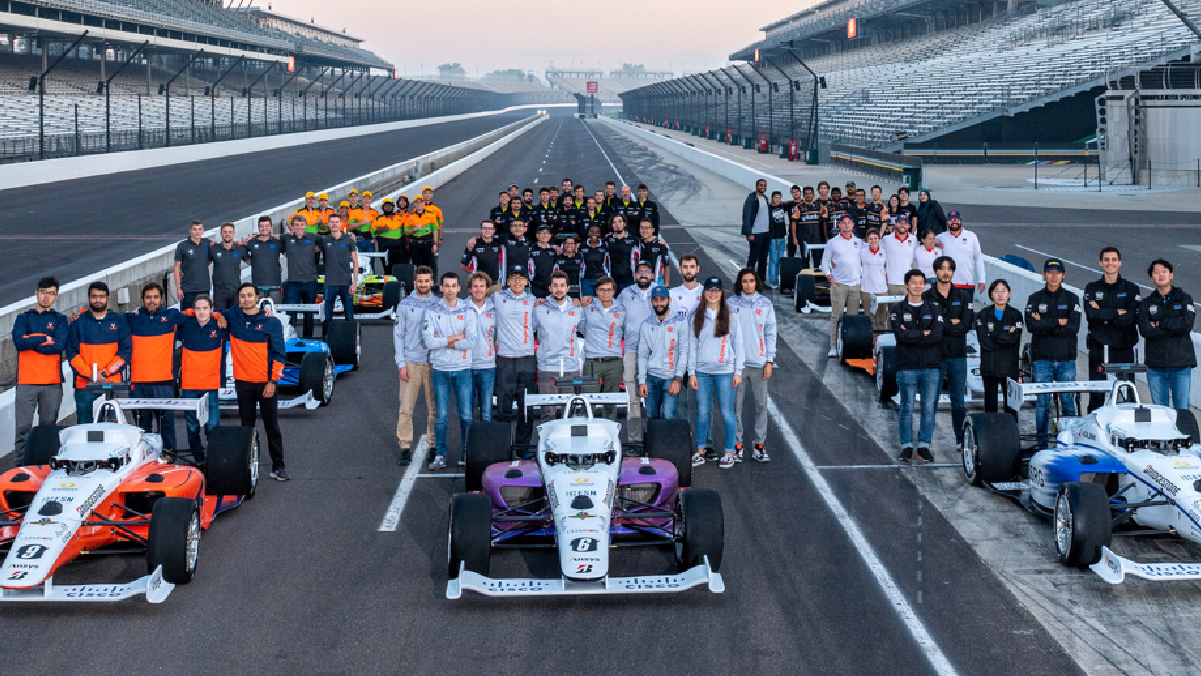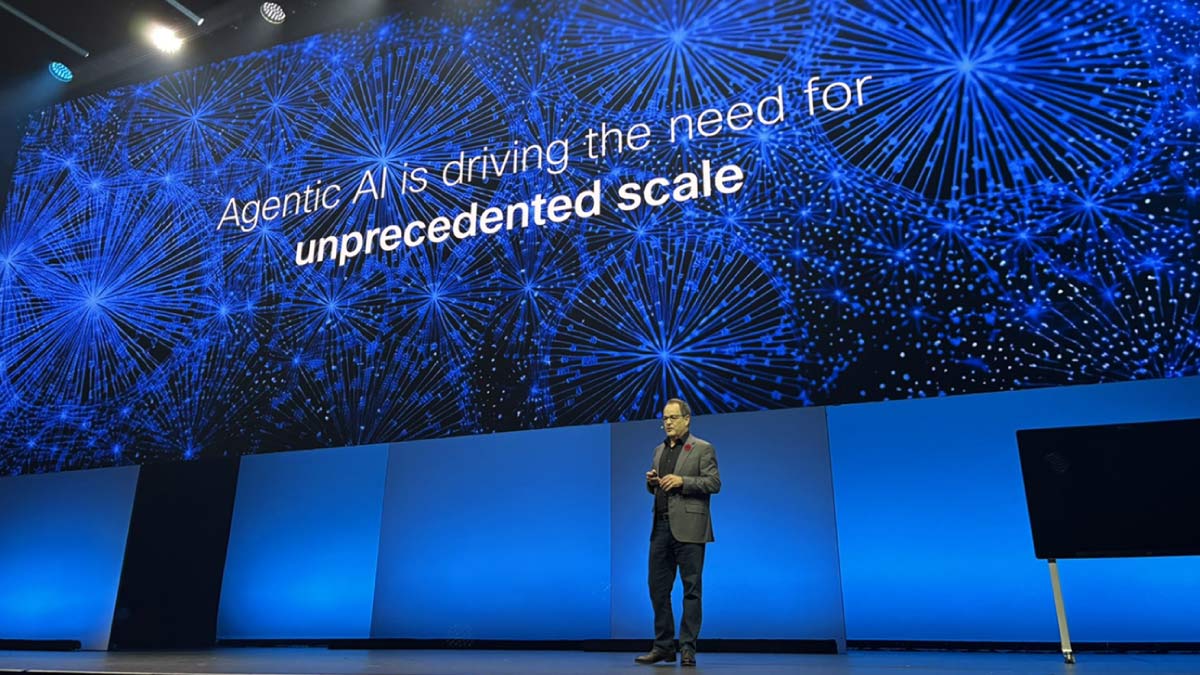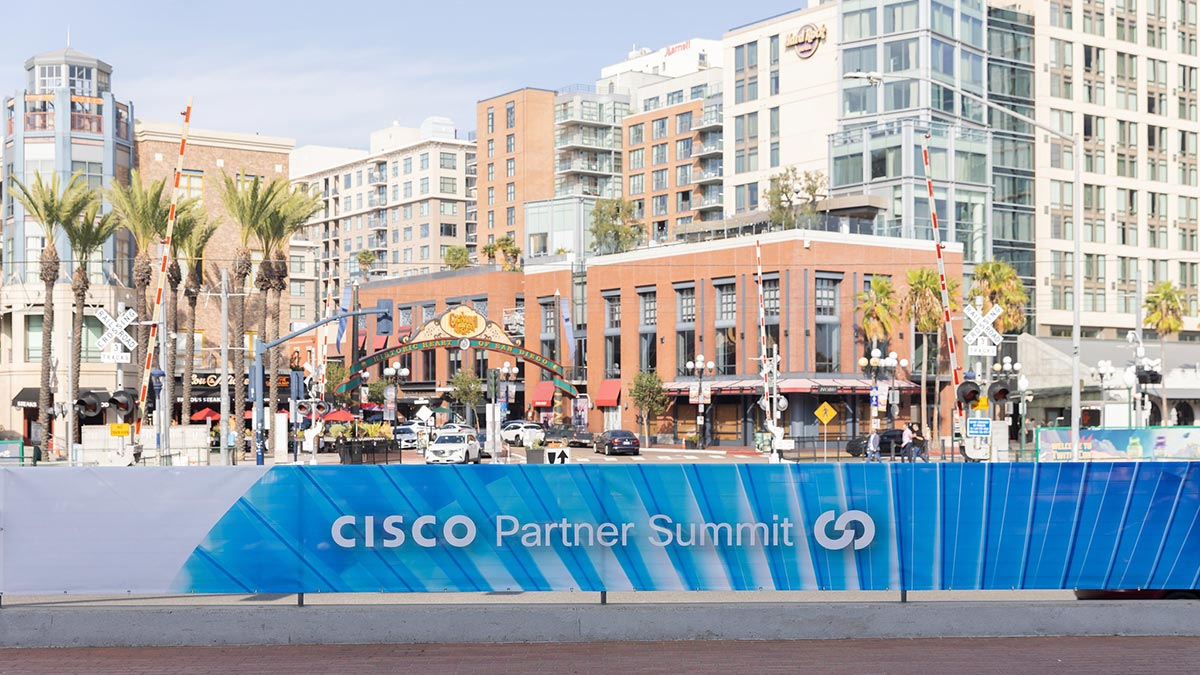Unless you’ve been on the far side of the moon, at some point, you’ve been caught up in the buzz around autonomous vehicle capabilities. Common conjecture about the future of autonomous vehicles is muddled with misunderstandings between Advanced Driver Assistant Systems (ADAS) and true Autonomous Driving. But there are a few things that are crystal clear.
First and foremost, true Autonomous Vehicles (SAE Levels 4 & 5) are coming. As sure as the sun will rise, auto manufacturers will bring fully self-driving vehicles to the world. Second, those new Level 4 & 5 vehicles cannot perform to standard on networks as they exist now.
But why not? To answer that question, consider the test cases of a track with a dozen fully self-driving vehicles racing competitively at 180 mph.
It has to be fast
At the Indy Autonomous Challenge (IAC), teams of faculty and post-grad students build and program full self-driving vehicles capable of navigating a multi-mile track at top speeds while passing and defending against other cars. The data throughput necessary to make this work is substantial.
At any moment, AI vehicles need to know where they are in space, where they are in the context of the track, their proximity to other vehicles, the condition of all the systems of the car, the environmental and strategic information provided by the team…and all of this information has to be precisely updated multiple times per second over wireless.
That connection throughput is made possible with Cisco’s Ultra-Reliable Wireless Backhaul (CURWB), providing all the in-vehicle and vehicle-to-trackside connectivity during IAC events. At a synchronous rate of 500Mbps, the wireless connection provides fiber-like performance, while Cisco switches inside the vehicle connect HD cameras, LiDAR, and sensors at speeds of 40Gbps.
Speed also plays a crucial role in how the vehicles change connections. Picture an instance where an autonomous racer is entering a tight set of turns at 60 mph with a competitor coming fast up the inside. Losing network connectivity, even for a second or two, would spell disaster.
Cisco overcomes that problem by using AI-driven predictions that consider what networks are available and which network is the optimal connection for the next section of the track. The seamless handoff of connectivity and session management is measured in microseconds, and the cars keep racing.
Everybody has to work together
To work in the real world, autonomous vehicles will not succeed at scale if they’re relegated as computers with four wheels and network access. To reach practical operation, autonomous cars need to be more than connected to a network; cars must behave as extensions of a network.
Back to the turn example above at the IAC. A car entering a turn only has the information its sensors can reach. The vehicle AI understands the immediate environment through cameras, the car component conditions through internal sensors, and the short-range proximity of objects and other vehicles through sonar/radar/LiDAR.
Meanwhile, the network hosts critical supplemental information. What are the weather conditions around the track? What is the projected longevity of fuel in the car at current performance? What are the locations of other vehicles beyond sensor range, and what is the most current race strategy from the team?
Data moves both ways between car and network to effect the best outcomes. And whilst CURWB does not scale for 280M cars in the US on over 4million of miles of roads - 5G or 6G or 7G might. Next-generation requirements for vehicles, wireless, and data repositories demand a fundamental change in how we build networks as well as how service providers will operate them. A massive overhaul of cloud-to-vehicle communications is needed to inspire the trust required before widescale adoption.
It has to inspire confidence
IAC teams invest years of work into cars worth hundreds of thousands of dollars; risk must be reduced to nil. A vital step toward eliminating risk and raising confidence is to provide the highest connection reliability possible.
If a car detects a collision is imminent, teams need the confidence to know the network and the vehicle will respond accordingly to avoid an incident. If the team changes their race strategy, they need to know that updates and changes will reach the car quickly and reliably.
When that confidence is delivered, teams can shift the focus of their thinking to more strategic tasks. Updating and optimizing algorithms, improving car output and reliability, creating efficiencies, and producing the best possible race strategy are the real tasks. That their network systems will deliver from start to finish and beyond should be a foregone conclusion.
The future of autonomous vehicle networks
Overcoming the challenges of providing connectivity for the Indy Autonomous Challenge informs the roadmap for how autonomous vehicles will take to highways and byways across the world. The exercise shows that we have to change how we think about building networks, not just for achieving 180MPH racing care, but to enable a faster and more reliable outcome for consumer vehicles.
And beyond this, what is learnt during these challenges may well impact more than transportation as Kyle Connor aptly mentioned “auto racing has been the birthplace of innovation for decades; from rearview mirrors and disc breaks to how neonatal intensive care units are set up like a "pit stop." So when it came to innovation in Connected and Autonomous Vehicles (CAV) the partnership between Cisco and the Indy Autonomous Challenge was an exciting opportunity for both of us.”
For self-driving racecars and the future of fully autonomous vehicles, Cisco delivers wins by providing the insights and capabilities that future networks need.



